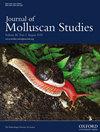收紧腰带:多placophora的系统转录组学
IF 1.2
4区 生物学
Q2 MARINE & FRESHWATER BIOLOGY
引用次数: 3
摘要
已经使用形态学、传统Sanger标记和有丝分裂基因组学研究了软体动物纲聚lacphora(几丁质)内的系统发育关系,但迄今为止,还没有使用转录组和全基因组数据进行分析。在这里,我们利用转录组的力量来研究几丁质的系统发育,以测试目前的分类方案和Callochitonidae的位置。Callochitoniadae是一个家族,由于过去的研究结果相互矛盾,其系统发育位置和分类归属尚不确定。使用具有不同分类单元占用阈值的多个数据矩阵和推理方法,包括级联和基于聚结的方法,我们发现了壳虫系统发育的一致性解决方案。我们的结果支持了鳞翅目、Chitonida目和Callochitonida目的系统,后两者是姐妹群。该决议与最近的有丝分裂基因组结果一致,并否定了Callochiton作为几丁质酶成员的地位。本文章由计算机程序翻译,如有差异,请以英文原文为准。
Tightening the girdle: phylotranscriptomics of Polyplacophora
The phylogenetic relationships within the molluscan class Polyplacophora (chitons) have been studied using morphology, traditional Sanger markers and mitogenomics, but, to date, no analysis has been carried out using transcriptomic and genome-wide data. Here, we leverage the power of transcriptomes to investigate the chiton phylogeny to test current classification schemes and the position of Callochitonidae, a family whose phylogenetic position and taxonomic assignation are uncertain because of conflicting results from past studies. Using multiple data matrices with different taxon occupancy thresholds and inference methods, including both concatenated and coalescence-based approaches, we find a consistent resolution of the chiton phylogeny. Our results support a system with the orders Lepidopleurida, Chitonida and Callochitonida, with the latter two as sister groups. This resolution is compatible with recent mitogenomic results and rejects the position of Callochiton as a member of Chitonina.
求助全文
通过发布文献求助,成功后即可免费获取论文全文。
去求助
来源期刊

Journal of Molluscan Studies
生物-动物学
CiteScore
3.00
自引率
8.30%
发文量
36
审稿时长
3 months
期刊介绍:
The Journal of Molluscan Studies accepts papers on all aspects of the study of molluscs. These include systematics, molecular genetics, palaeontology, ecology, evolution, and physiology. Where the topic is in a specialized field (e.g. parasitology, neurobiology, biochemistry, molecular biology), submissions will still be accepted as long as the mollusc is the principal focus of the study, and not incidental or simply a convenient experimental animal. Papers with a focus on fisheries biology, aquaculture, and control of molluscan pests will be accepted only if they include significant advances in molluscan biology. While systematic papers are encouraged, descriptions of single new taxa will only be considered if they include some ‘added value’, for example in the form of new information on anatomy or distribution, or if they are presented in the context of a systematic revision or phylogenetic analysis of the group.
 求助内容:
求助内容: 应助结果提醒方式:
应助结果提醒方式:


